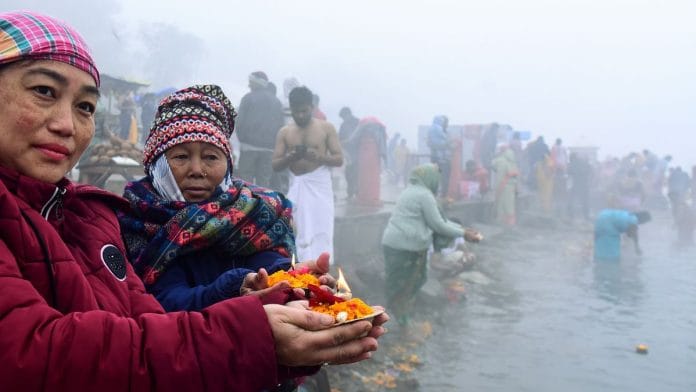Bhopal: The Madhya Pradesh government led by Chief Minister Mohan Yadav, once again, plans to roll out a policy to clean and preserve the Narmada River and its tributaries. The programme will be on the lines of the Clean Ganga Mission.
This will not be the first programme for the Narmada River conservation. In 2017, Prime Minister Narendra Modi launched the Narmada Seva Mission plan, formulated by the then Madhya Pradesh government led by Shivraj Singh Chouhan. Prominent personalities, including Amitabh Bachchan and the Dalai Lama, supported that mission.
Under the new programme, a newly formed cabinet committee with ministers from 11 state departments will deliberate and suggest short- and long-term measures to ensure the Narmada River does not reach a crisis stage as in the case of the Ganga.
One of the measures under consideration is creating a development authority in Amarkantak to control unregulated development, which may affect the forests of Anuppur from where the river originates, ensuring holistic development.
Others are banning mining and using heavy machinery on the river banks, frequent testing of water pollution levels, surveys of Narmada’s catchment area using drones, promotion of organic farming on farmland along the river bank, promoting plantation of fruit-bearing trees on private land along bank, removing encroachment, and empowering the indigenous communities in Amarkantak known for their techniques of preserving the forest and the surrounding area.
Before the Narmada Seva Mission plan, former urban development minister Babulal Gaur, in 2012, banned the construction of new manufacturing industries along the river bank to ensure Narmada pollution does not reach dangerous levels as in the case of Ganga.
Narmada travels 1,312 kilometres across Madhya Pradesh before draining into the Gulf of Khambhat in Gujarat. It is called the natural divide of India, geographically separating northern India from southern India.
Narmada is the lifeline of Gujarat and MP, where the river is the source of drinking water for over five crore people. Additionally, hydropower plants along the river supply electricity.
What to expect
“Unlike the Himalayan rivers, the source of Narmada’s water is the forests of Amarkantak, not some glacier. We want to ensure we take a holistic view of preserving the river, right from its place of origin in Anuppur to the entire route it takes across various districts and cities of the state,” said a senior official who is closely involved with the project.
The plan includes the identification of cities and districts through which Narmada passes—such as Narmadapuram—and cities that lie about five to ten kilometres away from the river, check on their growing population, and ensure there is a sewage treatment plant set up to avoid any direct discharge into the river.
Moreover, the revenue department will demarcate the river bank area having settlements, according to the flood level as laid down in the National Green Tribunal and high court guidelines.
An understanding of the scale and frequency of events, fairs and religious gatherings along the bank, as well as the number of people assembling at these events, will be collated from respective district collectors to ensure effective management.
Eleven government departments, including urban development and housing, panchayat and rural development, forest, farmers welfare and agriculture development, Narmada valley development, revenue, tourism and culture, science and technology, mining, water resource, and statistical departments, have held two meetings so far to come up with a draft policy.
According to the officer quoted above, the plan also includes consultations of the chief minister with various organisations and the scientific community. Civil and volunteer groups will be roped in for the conservation work.
“This policy is being developed as a pilot project, and once it is completed and implemented for Narmada, it will be replicated for the conservation of other rivers of the state,” said another officer affiliated with the project.
(Edited by Madhurita Goswami)
Also Read: In drought-prone Kachchh, Sardar Sarovar project is ‘dream come true’. But not for all farmers






